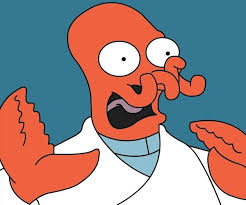only fools and racists believe that china can’t innovate.
I wish humanity had this decades ago but better late than never. Hope China can manufacture this and make it the standard for disposable food packaging instead of that non recycleble crap.
interesting enough i’m pretty sure we used to use hard baked wheat discs as food back during the reign of kings. https://en.wikipedia.org/wiki/Trencher_(tableware)
i recall watching some company in india making cultery out of pressed composite lentil powder
Very interesting. I’m excited to see where this goes and would be very happy to see the wide adoption of such products as they would most certainly make great benefits against the overuse of dumps for non-biodegradable packages. I would also he interested to know about its usage viability for non-food product packaging. (Though I still don’t understand the point of using non-biodegradable materials at all when cardboard is fine)
Isn’t cellulose near impossible to digest for humans and thus has a near negligible calorie and nutrition count?
I guess it’s edible on paper, but it’s not a good food source.
The edible design is for turtles:
Ngai explained, “The material developed in this research is completely edible, making it safe for turtles and other sea animals to consume without causing aquatic toxicity in the ocean.”
Thank you for the explanation! I kissed that paragraph!
To each their own.
I doubt the point is for actual nutritional value but as a more eco friendly packaging. I wouldn’t want to eat the packaging anyway. The whole point of it is to keep the food inside safe and contained.
True but I was just a bit worried as well because if it’s edible and biodegradable on paper, then wouldn’t that risk spreads of fungi and bacteria that could also feed on it?
So would it only be good for very short term food storage and prep?
I would imagine that it would primarily be used for more short term storage solutions than long term. So if this packaging started to degrade then whatever is inside is probably no longer safe for consumption. That being said, it may also require weathering and the presence of moisture to break down naturally. They make sponges and dishcloths out of cellulose and those, while technically biodegradable plant matter, last for quite a while in not the most ideal situations.They don’t typically start to mold or decay unless kept wet constantly. Idk how decomposable this stuff is but I imagine it’s one of those situations where if you sat it on your counter and it was dry it would be fine for a long time but if you threw it in a composter outside it would be gone in a year or 2.
You can keep some pet turtles
I don’t think they were intending to make it a good food source, just something that is not completely recalcitrant in some cases toxic, like plastics are.









